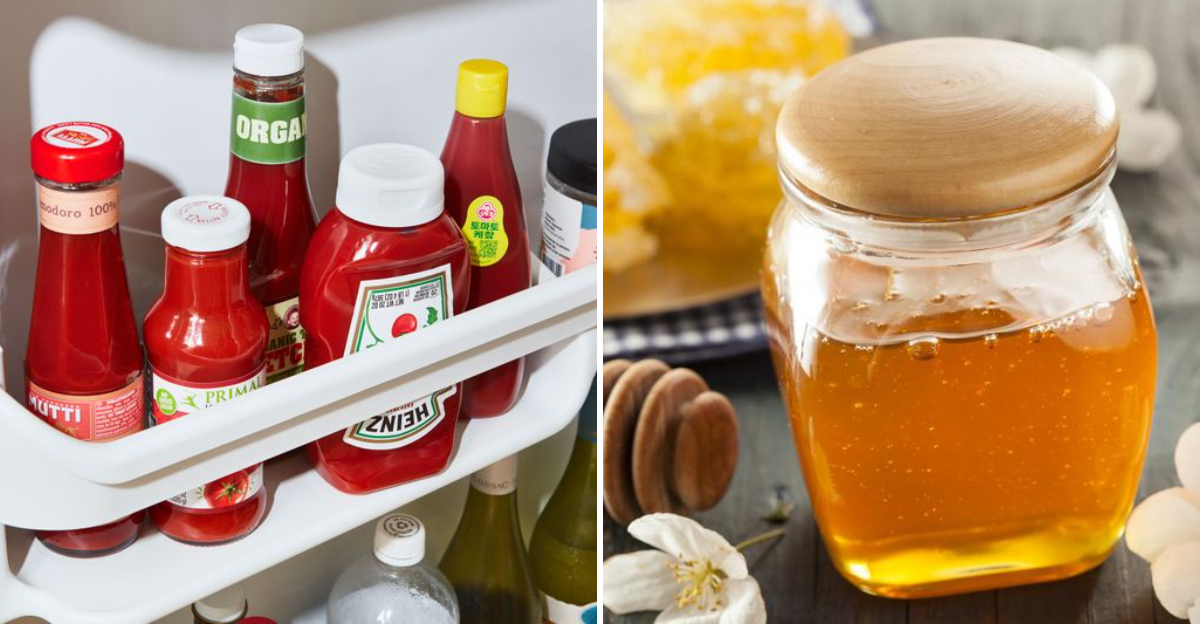These Are The Condiments You Need To Refrigerate (And A Few You Don’t)

Ever grabbed a bottle of ketchup from the pantry only to wonder if it should actually be in the fridge? You’re not alone!
The world of condiment storage is surprisingly complex, with some needing the chill of refrigeration and others doing just fine at room temperature.
Understanding proper storage not only prevents foodborne illness but also preserves flavor and extends shelf life.
1. Mayonnaise: The Fridge’s VIP
Once that jar of mayo is cracked open, refrigeration becomes non-negotiable. Even though commercial mayonnaise is acidified and formulated to inhibit bacterial growth, it still belongs in the fridge after opening—and mayo-based dishes shouldn’t linger at room temperature.
I learned this lesson the hard way after a summer picnic where my mayo-based potato salad sat out too long. Let’s just say my guests and I had a memorable, but not pleasant, evening afterward.
Commercial mayo contains preservatives that help, but even these versions need cold temperatures after opening to maintain quality and safety.
2. Ketchup: Better Cold Than Sorry
Contrary to what you might see in restaurants, ketchup benefits from refrigeration. The high acid content means it won’t immediately spoil at room temperature, but cold storage preserves its vibrant flavor and color.
Manufacturers like Heinz actually recommend refrigeration after opening, though your bottle won’t transform into a science experiment if left out for a day or two.
The cooler temperature also maintains that perfect consistency. Nobody wants watery ketchup on their fries!
3. Natural Nut Butters: Chill For Freshness
Those delicious natural peanut and almond butters without preservatives? They’re begging for refrigeration. The natural oils can quickly turn rancid when left at room temperature, giving your morning toast an unpleasant surprise.
My brother once insisted on keeping his fancy almond butter in the pantry. Two weeks later, he was wondering why his breakfast suddenly tasted like wet cardboard with hints of bitterness.
Refrigeration also slows that annoying oil separation, making your spread more convenient to use.
4. Fish Sauce: Cool It Down
That potent bottle of umami goodness deserves a spot in your refrigerator door. While technically shelf-stable due to high salt content, fish sauce maintains its complex flavor profile much longer when kept cold.
At room temperature, the flavor compounds can degrade faster, leaving you with something that’s still safe but less nuanced. Quality fish sauce isn’t cheap, so why not protect your culinary investment?
Plus, refrigeration helps contain that powerful aroma that can otherwise permeate your entire kitchen.
5. Creamy Salad Dressings: Fridge Or Bust
Ranch, blue cheese, and Caesar dressings contain dairy ingredients that spoil quickly at room temperature. These creamy concoctions need constant refrigeration to prevent them from becoming science experiments.
The dairy components provide the perfect environment for bacteria to multiply rapidly when warm. Even commercially prepared versions with preservatives aren’t immune to spoilage when left out.
Remember, if your dressing develops an off smell, unusual color, or mold, it’s time to toss it.
6. Maple Syrup: Definitely Refrigerate
Real maple syrup lacks preservatives and is essentially concentrated tree sap with a high sugar content. Without refrigeration, it becomes a paradise for mold growth once opened.
During my first Vermont vacation, I bought authentic maple syrup and left it in the pantry. Two months later, I discovered fuzzy white patches floating on top of my precious breakfast gold.
Always refrigerate after opening to preserve that woodsy, caramel-like flavor and prevent waste of this pricey breakfast luxury.
7. Dijon Mustard: Cold Preserves Kick
While yellow mustard can survive pantry storage, its sophisticated cousin Dijon performs better in the fridge. The delicate flavor compounds that give Dijon its distinctive taste degrade faster at room temperature.
I once left an expensive French Dijon in my cupboard for months. When I finally used it again, that bright, complex flavor had dulled to a shadow of its former self.
Refrigeration extends both shelf life and flavor integrity, keeping your fancy sandwiches and vinaigrettes tasting their best.
8. Hot Sauce: Room Temperature Champion
Good news for hot sauce enthusiasts! Most vinegar-based hot sauces can happily live outside the refrigerator. The combination of vinegar, salt, and chili peppers creates an environment where harmful bacteria struggle to survive.
However, refrigeration won’t hurt and might help preserve the vibrant color and flavor longer. Some craft hot sauces with fewer preservatives might benefit from cold storage.
Always check the label for specific instructions, particularly for fruit-based or less acidic varieties.
9. Honey: Keep It In The Pantry
Honey is practically immortal at room temperature! Archaeological digs have uncovered edible honey from ancient tombs thousands of years old. Its unique composition makes it naturally antibacterial and resistant to spoilage.
Refrigeration actually damages honey by speeding up crystallization, turning your smooth golden liquid into a grainy solid. If crystallization occurs, simply place the jar in warm water to restore its flowing texture.
Store honey in a cool, dry cabinet away from direct heat for best results.
10. Soy Sauce: Flexible Storage Star
Soy sauce contains enough salt and has undergone fermentation, making it remarkably shelf-stable. It won’t spoil if kept in the pantry after opening, though refrigeration extends its peak flavor quality.
The high sodium content acts as a natural preservative, inhibiting bacterial growth. However, premium or low-sodium varieties benefit more from cold storage than their conventional counterparts.
For everyday cooking, pantry storage works fine, but if you’re a soy sauce connoisseur who can detect subtle flavor changes, the refrigerator is your friend.
